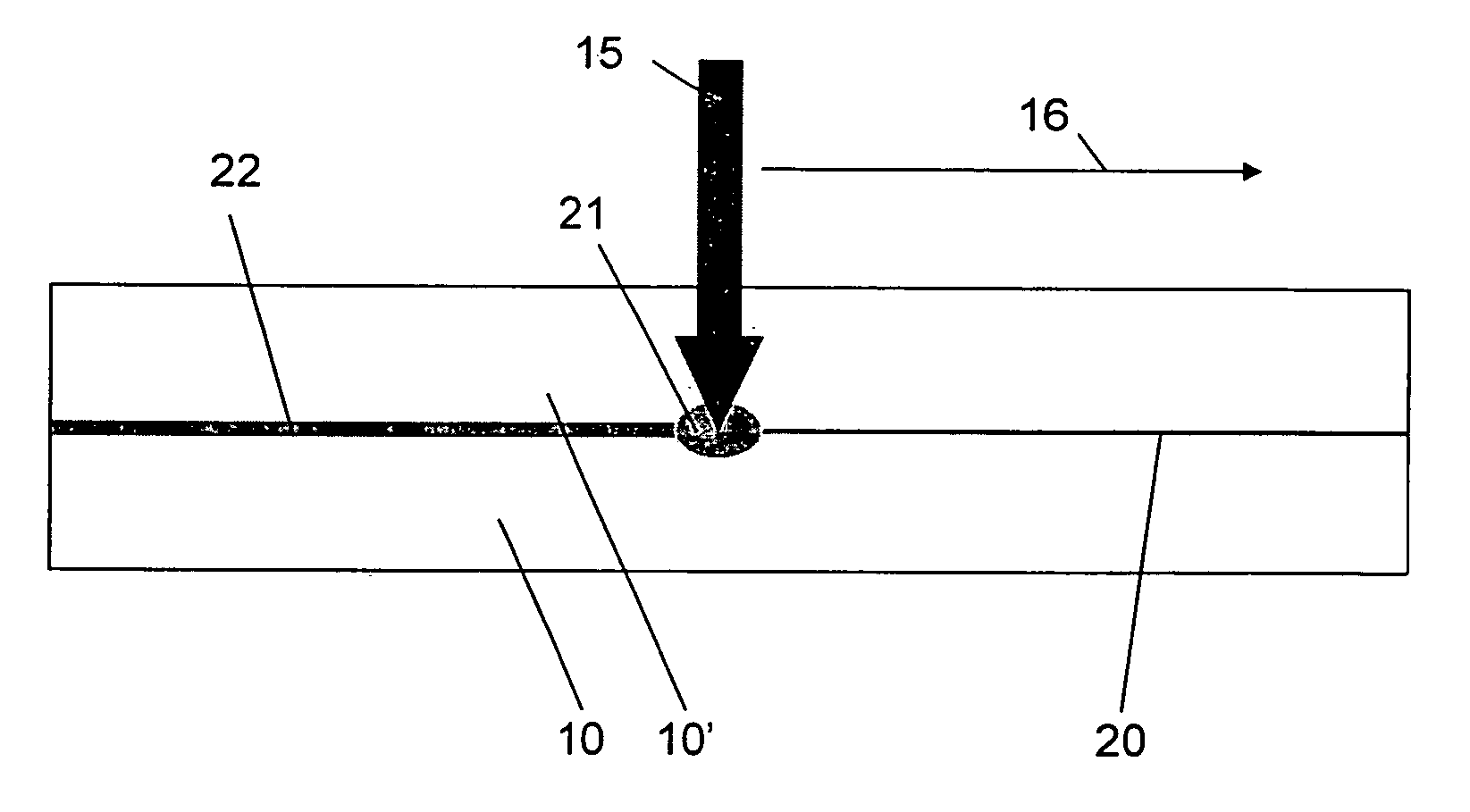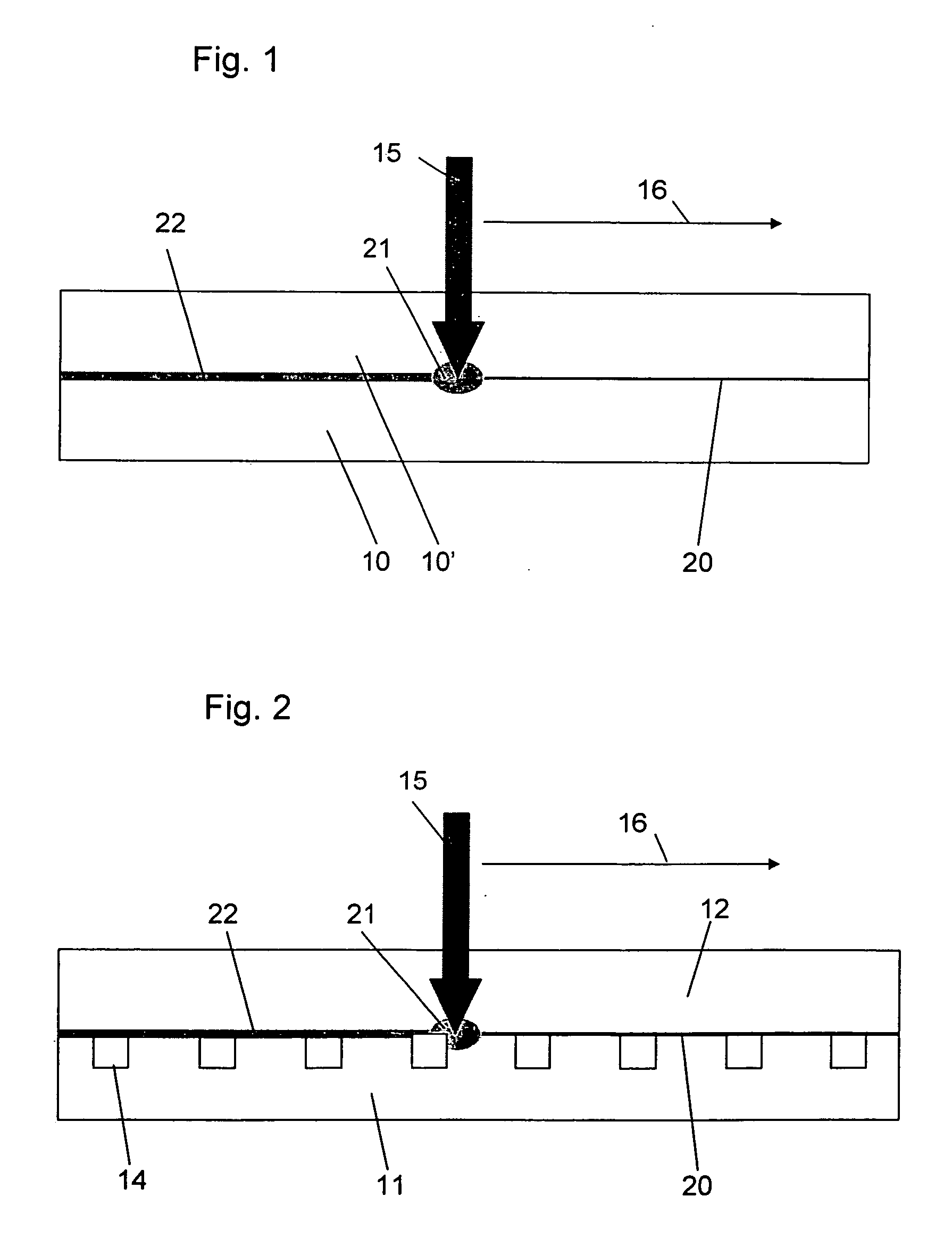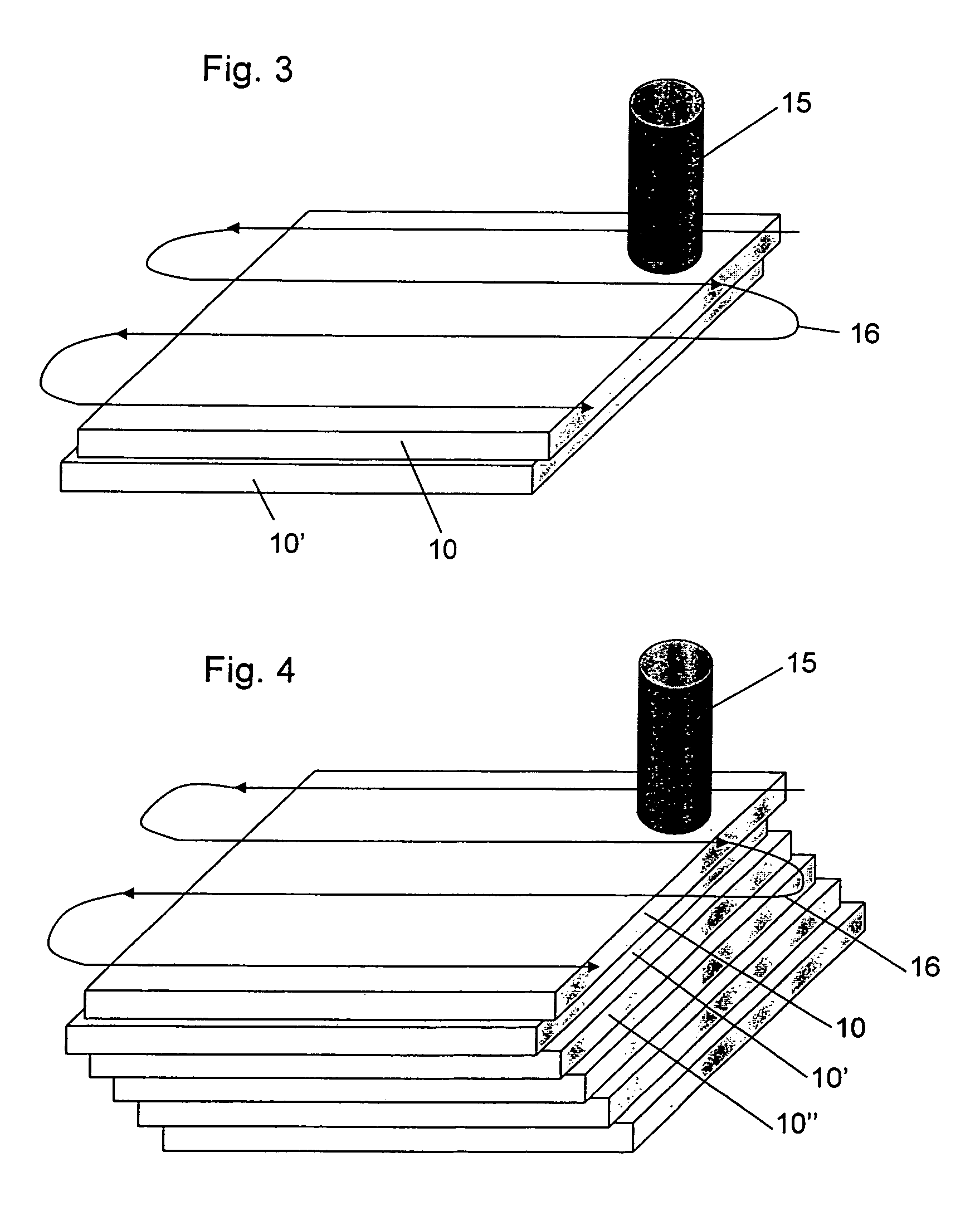Method for joining plastic work pieces
a technology of laser welding and workpieces, which is applied in the field of laser welding to join plastic workpieces, can solve the problems of long handling time, inability to use the method in connection with microstructures, and color pigments to be added to the two workpieces, so as to achieve the effect of rapid manufacturing of functional components
- Summary
- Abstract
- Description
- Claims
- Application Information
AI Technical Summary
Benefits of technology
Problems solved by technology
Method used
Image
Examples
Embodiment Construction
[0046]FIG. 1 shows schematically the method according to the invention for the joining of the two workpieces 10, 10″ of plastic material wherein an absorption layer 20 of carbon is applied to the workpiece 10. A laser beam 15 with a wavelength of 940 nm, which is focused onto the absorption layer 20 is moved along a path 16 (scanned). The scanning speed in the case of PMMA was 20-50 mm / s;
[0047] The scanning staggering was 200 μm.
[0048] The power of the laser beam 15 was so selected that the temperature in the laser-influenced zone 21 exceeds the glass temperature of the plastic (PMMA; 105° C., PC; 160° C.), whereby the absorption layer 20 is heated and, as a result, the two workpieces 10, 10′ are interconnected via the joining zone 22. During the laser scan the two workpieces were pressed together with a pressure of between 0.3 and 0.7 MPa (3 bar and 7 bar).
[0049]FIG. 2 shows a transparent microstructured polymer foil or plate 11 being joined by the method according to the invent...
PUM
| Property | Measurement | Unit |
|---|---|---|
| thickness | aaaaa | aaaaa |
| thickness | aaaaa | aaaaa |
| wavelength | aaaaa | aaaaa |
Abstract
Description
Claims
Application Information
 Login to View More
Login to View More - R&D
- Intellectual Property
- Life Sciences
- Materials
- Tech Scout
- Unparalleled Data Quality
- Higher Quality Content
- 60% Fewer Hallucinations
Browse by: Latest US Patents, China's latest patents, Technical Efficacy Thesaurus, Application Domain, Technology Topic, Popular Technical Reports.
© 2025 PatSnap. All rights reserved.Legal|Privacy policy|Modern Slavery Act Transparency Statement|Sitemap|About US| Contact US: help@patsnap.com



